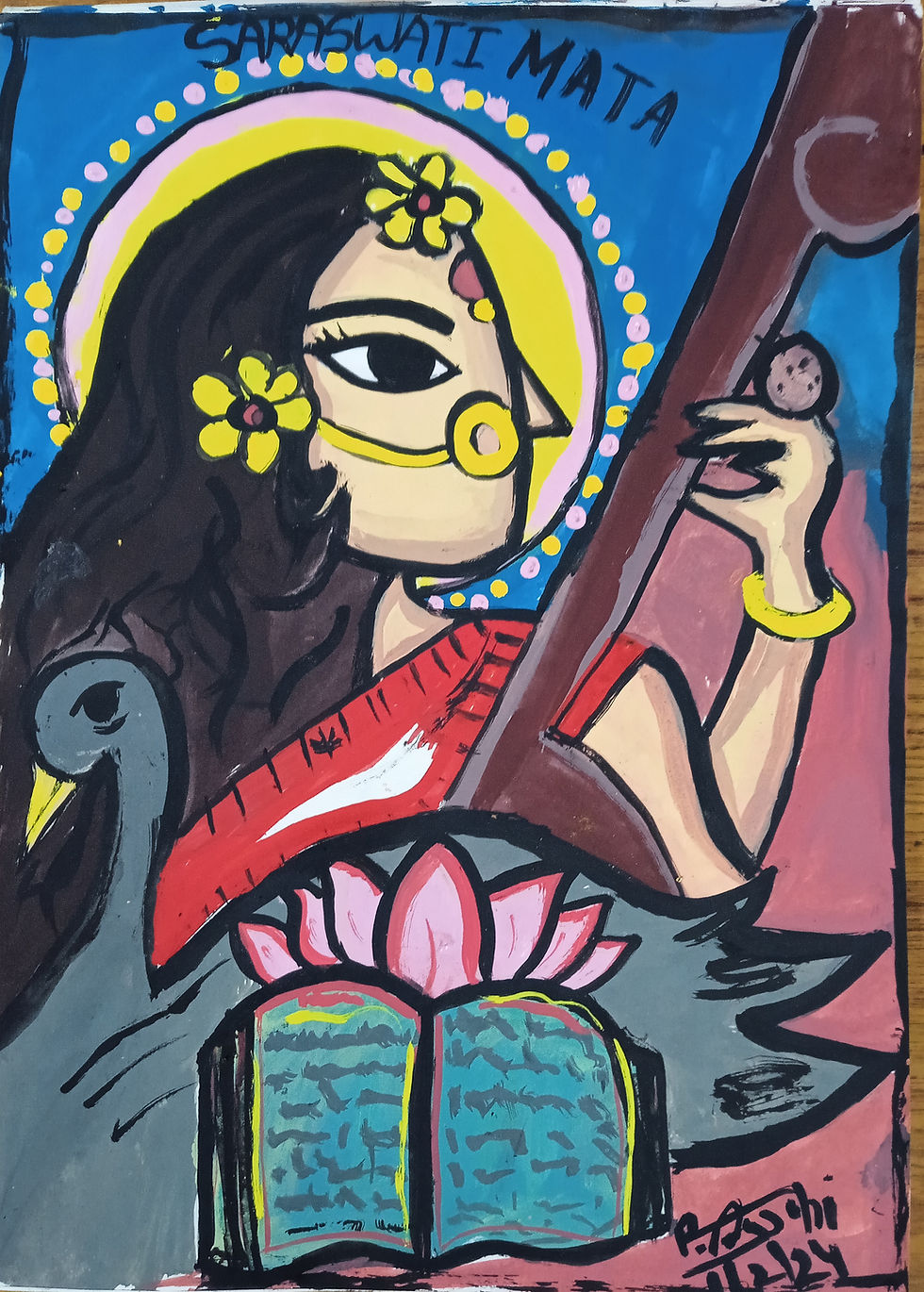What Indian Parents Can Learn From Their Child’s Artworks
- CAMI Info
- Sep 19
- 2 min read
Every child’s artwork is more than just a drawing to put on the fridge. Behind every color, shape, and stroke lies a story, an emotion, or even a hidden worry. For Indian parents, who often focus on academics and achievements, children’s artwork can be a window into their inner world.
At the Children’s Art Museum of India (CAMI), we encourage parents to look beyond neatness and technique. Children’s drawings are not about creating “perfect” pictures — they are about expressing feelings that words sometimes cannot capture.

Art as a Language of Emotions
Children may not always say when they are stressed, excited, or upset, but their art often speaks for them. A child who fills the page with bright colors might be expressing happiness and confidence, while a child who repeatedly draws storms or darker themes may be signaling stress or anxiety. Recognizing these patterns helps parents understand their child better.
What Parents Can Learn from Artwork
1. Emotional State of the Child
Colors, themes, and expressions in drawings often mirror how a child feels inside. For example, using a lot of red may represent excitement or anger, while calm blues may show peace and comfort.
2. Interests and Personality
A child who loves drawing superheroes may be exploring ideas of courage and strength, while one who prefers nature may be connected to peace, growth, or imagination. These choices reflect personality and evolving interests.
3. Hidden Stress or Anxiety
Sometimes, children draw what they cannot say out loud. A child worried about exams may draw stressful scenes like broken pencils or scribbled pages. Parents who pay attention can use this as a gentle opening to talk about their child’s feelings.
4. Creativity and Problem-Solving
Children who experiment with unusual colors or innovative themes show creative problem-solving skills. Parents can nurture this by appreciating originality rather than expecting “perfect” art.
5. Bonding Opportunities
Asking a child, “Tell me about your drawing,” opens the door to meaningful conversations. This strengthens parent-child bonds and builds trust.
Indian Parenting and Art
In India, parents sometimes overlook art as “just a hobby” compared to academics. But artwork offers valuable insights into a child’s emotional intelligence, resilience, and imagination. With schools introducing Art-Integrated Learning, parents too can support this shift by valuing emotional expression as much as test scores.
Instead of asking, “Why didn’t you color inside the lines?”, parents can ask, “What made you choose these colors?” Such questions encourage children to feel safe expressing themselves.
Tips for Parents
Create a judgment-free space for your child’s artwork.
Encourage them to talk about the feelings behind their drawing.
Display their artwork proudly — it boosts self-confidence.
Use art as a tool to talk about emotions, especially during stressful times like exams.
Appreciate effort and creativity, not just neatness.
For Indian parents, children’s artworks are not just drawings — they are stories of the heart. They reflect emotions, interests, and unspoken thoughts. By observing and encouraging these creative expressions, parents can build stronger connections and help their children grow with confidence and emotional balance.
At CAMI, our ArtFest: Draw Your Emotions is dedicated to celebrating this very bond — where art becomes a bridge between children and parents.
🔗 Explore more at: www.childrensartmuseumofindia.com
#ChildrensArtMuseumIndia, #DrawYourEmotions, #ArtFestIndia, #KidsArtIndia, #ArtAndParenting, #CreativeParenting, #ArtAndEmotions, #ParentChildBonding, #ArtForWellbeing #IndianParenting



Comments